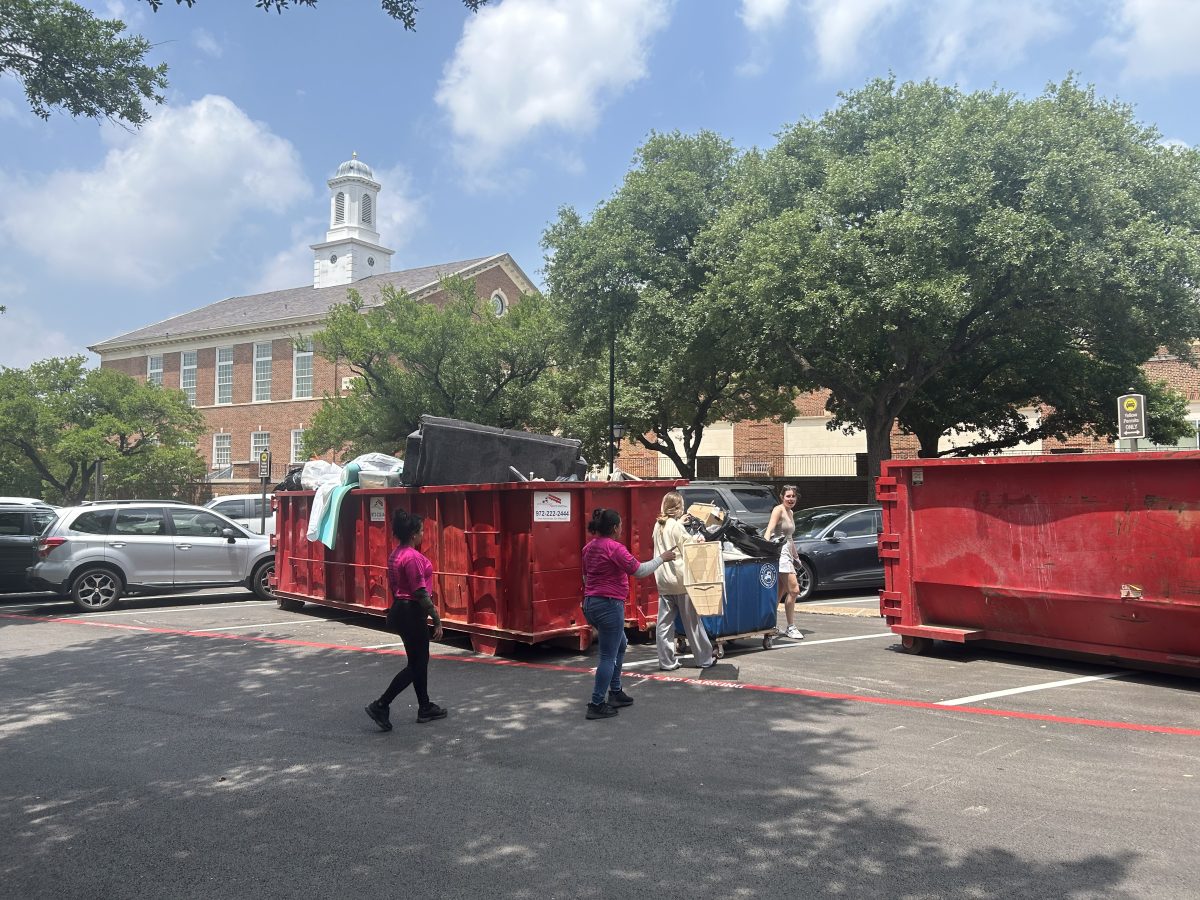Dallas native Deananne Vanderslice didn’t waste time sifting through the Italian or Napa Valley varietals at Central Market on Lovers Lane. She wanted a full-bodied red, she said, and she knew just where to find it: a shelf in the back marked “Texas Wines”.
She ran her fingers over each glass bottle, kneeling on the floor to carefully inspect the selection on the lower shelves. Vanderslice finally chose a bottle of 100 percent Texas-grown tempranillo, one of her “abso-fruit” favorites, she said.
Many Texans and non-Texans alike are just becoming knowledgeable of just how plentiful, and popular, these homegrown varietals really are. October marked the beginning of fall and the onset of Texas Wine Month, a full 31 days dedicated to wines made and grapes grown in Texas.
“Over the past five years, we’ve noticed a pretty notable increase in popularity of Texas wines,” said the wine manager at Central Market, who asked not to be named due to corporate policy. “It seems like people have really started to enjoy them.”
According to the Texas Wine and Grape Growers Association, Texas is No. 5 in the country for wine production and No. 7 for wine grape production. From 2007 to 2009, the number of cases of wines produced in Texas increased by 20 percent, and the number of wineries across the state increased by 16 percent. Although the 2011 statistics will not be available until the end of this year, the Texas Wine and Grape Growers Association predicts the growth rates to be equally as great, if not better.
Marc Moberg of Inwood Wineries in Florence, known for its award-winning temperanillo, attributes Texas wines’ recent jump in popularity simply to winemakers producing better quality wines.
“Over time, winemakers gain the knowledge and experience needed to make better wines,” Moberg said. “Winemaking in Texas is still pretty young in comparison to your more well known winemaking regions like California. There’s a lot of room for growth.”
When Dan Gatlin, the founder of Inwood Wineries, planted his first vineyard in Texas in 1981, only five or six other vineyards in the state existed. It was during the late 70s and early 80s that some of Texas’ most well known winemakers-Ed Auler, T.D. Munson, Doc McPherson, and Dr. Richard Becker-began growing and experimenting with different types of varietals. Gatlin’s years of experimentation enabled him to truly understand which varietals thrive in certain climates and terroirs. This experience and knowledge, according to Moberg, is what makes their wine so good. Inwood Vineyard’s wines are currently served in 230 restaurants throughout the state.
“[Gatlin] has tried 30 different grape varieties throughout the state in seven different places,” said Moberg. “Now we have the knowledge we need to make our wine better than competitors. I mean, we never hold onto our wines for more than a year; they sell out. We don’t advertise. We sell our wine because it’s good.”
Kevin Platner, owner of Times Ten Cellars in Dallas and Times Ten Vineyard and Winery in Southwest Texas, agrees that knowledge of what varietals grow well in particular locations is the leading factor in Texas wine industry’s growth. Making the transition from growing grapes that people know-chardonnays and cabernets-to growing grapes that may be less well known but that thrive beautifully in Texan climates is key, Platner said.
“The main varietals that should be grown are warm climate varietals, some typically grown in Italy: nebbiolo, barbera, and sangiovese. Tempranillo, which is typically grown in Spain, is a really good grape for Texas. Viognier, a white wine grape typically grown in France, also does very well,” Platner said.
The only problem with producing such varietals lies in the consumers’ lack of familiarity with them. Emily Simpson of McPherson Cellars in Lubbock-a winery known for its sangioveses, roussanes, and viogniers-said this issue, while inevitable, is by no means a deal breaker.
“When we first started, people were scared to try varietals that they weren’t used to,” said Simpson. “But people are becoming more and more aware of them. Now our customers know our main varietals pretty well.”
In fact, McPherson Cellars’ customer base has grown on a national level. In addition to Texas, they distribute to New York, Virginia and Maryland-an impressive accomplishment, as Texas wines are generally still fairly localized.
“Texans are very big on purchasing items from Texas, so Texas wines tend to be consumed by Texans,” said Platner. “Eventually though, in [a few] years, I think Texas could grow world class fruit, competing in the market with California, France, Washington, everywhere.”
Texas grapes are clearly capable of producing a product that holds its own in competitions nationwide, bringing home awards from across the country. But Texas grape growers face climate and logistical difficulties that growers from other parts of the country do not.
“[Times Ten] vineyards are eight hours by car from [our cellars]. So to get out there to harvest grapes to bring them back is a logistical challenge,” said Platner. “We get a lot more storms [in Texas]…that you may not get in California. There’s also the potential for late frosts.”
According to national regulations, a wine must be made up of at least 75 percent of grapes grown in a particular state in order to have the state’s name on the label. As placation for bad weather, state and national regulations are variable to change in accordance with the severity of the conditions.
“If we have a bad season, we are allowed to put more juice from other states into our wine and call it a Texas wine,” Platner said.
Inwood Wineries prides itself on making multiple wines from 100 percent Texas grown grapes. They recently released a chardonnay grown 100 percent in Dallas, which Moberg claims to be delicious. The vineyard is located on a strip of consolidated wineries in North Dallas called the Dallas Wine Trail.
People seem to be catching on to Texas’ growing wine culture. Amanda Koraska, director of operations for Flat Creek Estate Winery in Marble Falls said, “In the past 10 years, we’ve seen wineries in Texas grow from about 20 to 200. It’s been pretty crazy.”
Returning customers like Vanderslice will continue to spread the word about Texas wines. She said she brings a bottle to every dinner party she goes to.
“I want everyone to have a taste,” said Vanderslice.
https://smudailycampus.com/news/metropolitan








